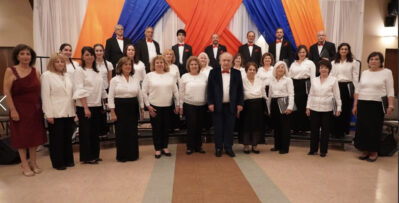SAN FRANCISCO — When a cousin of Diana Hekimian’s in San Francisco mentioned that she had found an old manuscript in the basement of her apartment building two months ago, Hekimian didn’t know what to think.
Then she saw the manuscript. With its faded type, handwritten notes, and photographs taped to the pages, “it looked like a very important document,” she said. So, she brought it to the Armenian Film Foundation for help figuring out what it was.
Hekimian, a founding member of the Armenian Dramatic Arts Alliance and board member of the Armenian International Women’s Association, had actually just stumbled upon an original copy of one of the earliest reports of the 1915 genocide in Armenia: The Diyarbekir Massacres and Kurdish Atrocities. It was written by British Pro-Consul Thomas Mugerditchian and published in 1919.
People all over the world can get a personal glimpse into Mugerditchian’s life through the testimony of his daughter, Alice Mugerditchian Shipley, which is integrated into the Visual History Archive as part of the University of Southern California (USC) Shoah Foundation’s Armenian Genocide testimony collection. The testimony was originally filmed by documentarian J. Michael Hagopian and collected by the Armenian Film Foundation.
The Mugerditchian family lived in comfort and prestige in Diyarbekir, Turkey, until World War I began and Alice, her mother and siblings were forced to flee. They attempted to stay alive in Kharpert (Harput) until finally deciding to escape through the mountains of Dersim and into Russian controlled Erzincan. Thomas Mugerditchian was still in Diyarbekir when he wrote his report and later served as a diplomat in Egypt. The family was finally reunited in California in 1921.
The Diyarbakir massacres and the Kurdish Atrocities is significant because it was one of the first written reports of violence committed against Armenian men, women and children in May 1914 leading up to the beginning of the Armenian Genocide in 1915, said Carla Garapedian, board member of the Armenian Film Foundation. The acts of violence and persecution against innocent civilians that Mugerditchian describes provide clues that a genocide was about to begin.







